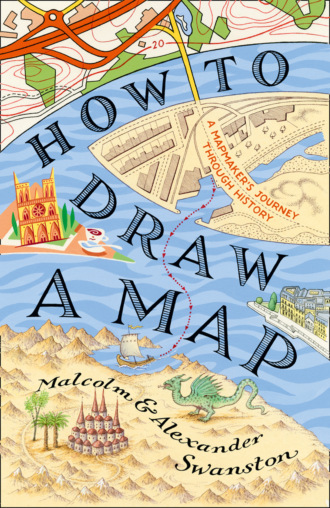
Полная версия
How to Draw a Map

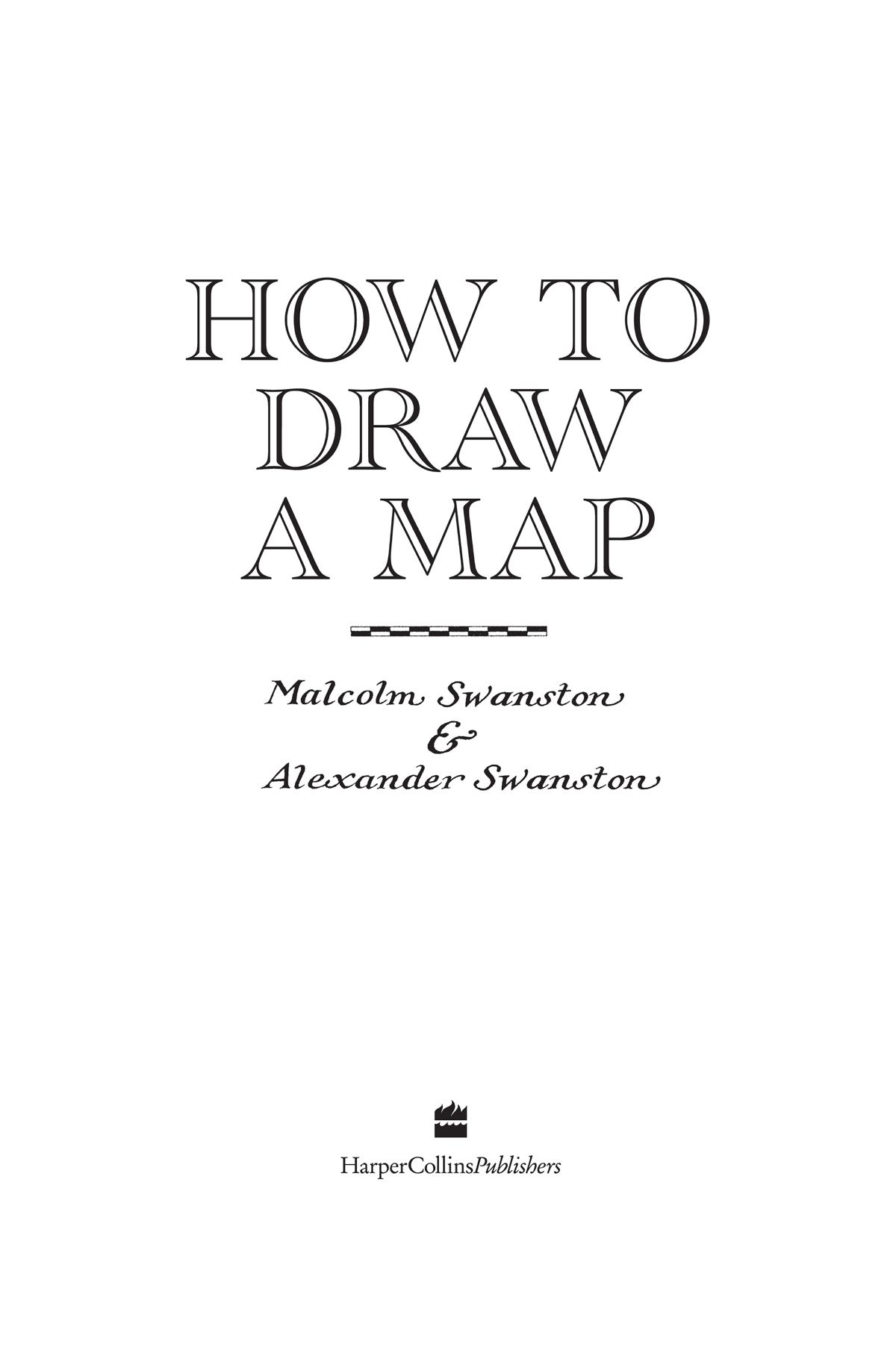
COPYRIGHT
HarperCollinsPublishers
1 London Bridge Street
London SE1 9GF
www.harpercollins.co.uk
First published by HarperCollinsPublishers 2019
FIRST EDITION
© Malcolm Swanston and Alexander Swanston 2019
Cover design by Claire Ward © HarperCollinsPublishers Ltd 2019
Cover illustration © Neil Gower
A catalogue record of this book is available from the British Library
Malcolm Swanston and Alexander Swanston assert the moral right to be identified as the authors of this work
All rights reserved under International and Pan-American Copyright Conventions. By payment of the required fees, you have been granted the nonexclusive, non-transferable right to access and read the text of this e-book on screen. No part of this text may be reproduced, transmitted, downloaded, decompiled, reverse engineered, or stored in or introduced into any information storage retrieval system, in any form or by any means, whether electronic or mechanical, now known or hereinafter invented, without the express written permission of HarperCollins e-books.
Find out about HarperCollins and the environment at www.harpercollins.co.uk/green
Source ISBN: 9780008275792
Ebook Edition © September 2019 ISBN: 9780008275815
Version 2019-08-20
DEDICATION
To my wife Heather.
And to Nina, Alexander and Amy.
CONTENTS
Cover
Title Page
Copyright
Dedication
Introduction
1. Lost in Eden
2. Anaximander’s Vision
3. The Legacy of Rome
4. The Road to Paradise
5. Visions of a New World
6. Pre-Columbian Voyages in the Atlantic
7. The First Circumnavigation of the World
8. The English World View
9. Mercator Navigates the World
10. Terra Australis (‘South Land’)
11. Enslaved
12. The Cassinis’ Conceptions
13. The Problem with Empires
14. Gone West
15. A World at War
16. The Second Round
17. Cities
18. Another View of Earth
Acknowledgements
About the Publisher
INTRODUCTION
In one way or another, we are all mapmakers at heart. I am sure we have an inbuilt urge to understand the world around us and beyond; how do we, or at least our part of the world, fit into the great scheme of things?
Ever since I can remember, I have been completely absorbed in atlases and maps of all kinds. As a child, I received one particular book that enthralled me for years: The History of Our Earth, in which talented artists re-created scenes across double-page spreads of landscapes featuring early dinosaurs, exotic creatures of the desert, human migrations and early civilisations; its well-worn pages are still with me. The moment I first open an atlas, whether it is political, physical, topographical or an historical atlas of any kind on any subject, huge periods of time seem to fly by unaccountably. This affliction has lasted the whole of my lifetime and I appear to have passed it on to one of my children, who is engaged in the production of maps, including the ones used in this book.
My first cartographic undertaking (although I didn’t realise it at the time) was not far from my childhood home, at a milecastle. As the name suggests, these were fortified posts built every Roman mile along Hadrian’s Wall. Interspersed between major forts, these milecastles and smaller turrets contained about 50 men to keep watch, usually out to the north. I would set about measuring the visible remains of ‘my’ castle and working out how its garrison fitted within its walls. My measuring system was a length of rope cunningly adapted to its new use by having a knot tied every yard, and thus I was able to create a five-yard system. Well equipped with a quarter-inch grid in my school notebook, two pencils and a pencil sharpener, and lavishly provisioned with cheese and pickle sandwiches and a bottle of Coke, I set off. I should say we set off, as I had recruited my next-door neighbour and school friend Rob to help (facing the unknown alone was too daunting) – a latter-day Mason and Dixon (see here).
We measured the milecastle at Gilsland, which, in the 1950s, was in the county of Cumberland but is now part of Cumbria; it is still in my memory six decades later. The milecastle is known to modern archaeology as Milecastle 49 at Harrows Scar. It proved to be 19.8 metres (approximately 30 yards) east to west and 22.9 metres (approximately 32 yards) north to south. It is now in the care of English Heritage. Its monument number, if you are interested in such things, is 13987.
Since the River Irthing was not too far away and stocked with trout prepared to present themselves for capture and the frying pan, this was our next port of call and, I suspect, Rob’s real reason for coming along. We succeeded; we came away with the fish and having recorded the edge of the Roman Empire.
My career since then has been almost completely focused on thematic maps – those which display a particular theme, topic or subject of discourse, rather than road maps, with which we are all familiar. Over the course of my life, I have accrued over 50 years of map creation and during these decades cartography has seen the most profound changes, the greatest of which has been technology: the move from physical craftsmanship to the use of computers. Trading the pen, scalpel and scribing tool for software and the mouse marked a significant evolution in the craft of mapmaking.
It seems like a lifetime ago that I received my first fee-paying commission while working for Rolls-Royce Limited. In those far-off days, we cranked up an ancient machine that rejoiced in the name of the ‘Illustromat’. It was originally intended as an aid to technical illustration, used to convert a 2D plan into a 3D angled-view ‘isometric’ illustration. We had discovered that, from a conventional 2D map, we could create a 3D angled view of any chosen part of the earth’s surface.
I was required to create a map of the empire of Alexander the Great, to be featured in a new publication on the famous empire-builder. We taped three maps covering the area of Alexander’s empire carefully together and placed them on the flat bed of the Illustromat. The operator switched on the machine, we selected the angle of the view required, lights flashed and the operator began to trace the coastlines, rivers and details of the area of the empire. As he manipulated the complex settings, veins stood out on his forehead. He began to sweat profusely and I fled the room to return with hot, sweet tea after the initial drawing was completed. Over this drawing were placed several translucent overlays, and on each overlay a different layer of information was created – coastlines, rivers, lakes, type, arrows and symbols. Slowly, a total image of the map was formed. In this particular case, an airbrush base was created showing the land form, mountains, rolling hills and sweeping deserts.
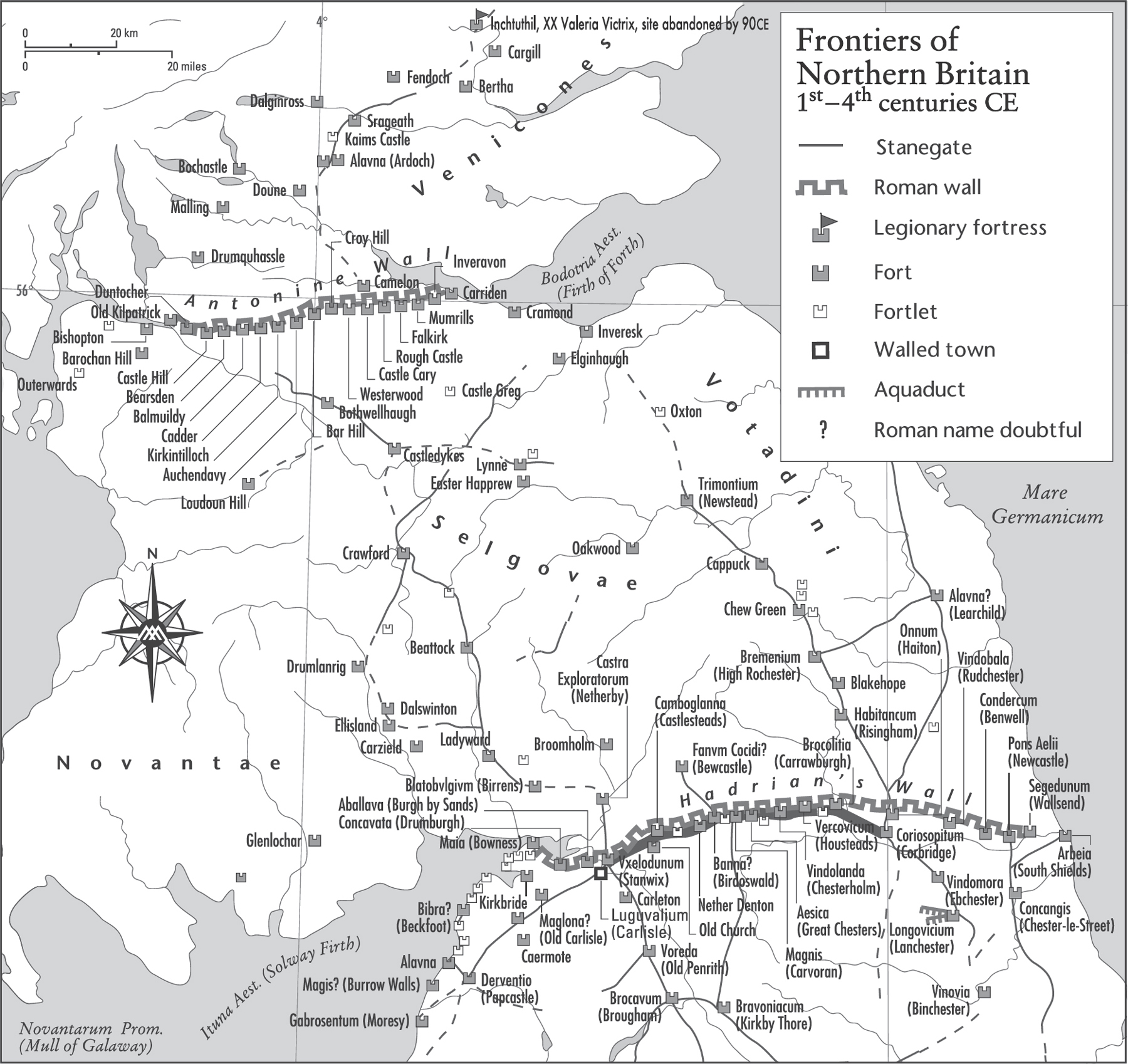
Map 1. My first cartographic adventure was to measure a turret on Hadrian’s Wall, a tiny piece of this huge structure. I didn’t know it then, but I would revisit this subject many times.
Not long after my first commission, a huge, life-changing project arrived – a request to produce The Times Atlas of World History, as its first edition was then known. Part of the delivery from the customer was a set of maps produced by a cartographer called Erwin Raisz. Raisz, born and raised in the Austro-Hungarian Empire, was a civil engineer and architect, who entered the world of cartography after migrating to the United States. Having studied cartography, he went to work for Harvard University, where he was curator of maps for 20 years, during which time he created a significant body of work using a hand-drawn pen-and-ink technique. These maps had a particularly distinctive look – he called them ‘physio-graphic’ maps – and, because they were hand-drawn, the style was unique to him; a style I found enthralling and inspiring. I also found his tendency to look at a region or country from any direction (by which I mean not always putting ‘north’ at the top) utterly liberating. He had somehow systematically recreated an updated version of the medieval cartographer’s or illustrator’s attempts to portray the surface of the planet, sharing their willingness to look at the globe from unconventional directions. Over the last 50 years I have employed some of that methodology to create solutions when explaining thematic historical events.
In How to Draw a Map, I aim to introduce you to the craft that has been my life’s work. The early part of the book is based on a selection of maps that demonstrate how the world was first explained cartographically. They have been selected from thousands of potential examples and I hope my choice can, in some way, explain this story. Then we move on to maps that are concerned with filling the void – once we know what shape the world is, we will set about peopling the globe and explaining the growth of civilisations and their changing forms.
And finally, this work is dedicated to the contemporary future of mapping and the potential use of artificial intelligence in the permanent updating of cartographic and thematic data.
I am now responsible for, and sometimes guilty of, producing around 100 thematic histories and the largest body of thematic maps ever produced. All this work has been completed with the cooperation of many individuals whose input has been of immense value, and just some of their stories are included in this book.
1
LOST IN EDEN
The instinct to understand the immediate world around us is not exclusive to humans. Animals create food stores and mark with scent; the honey bee directs its buzzing colleagues to a good supply of nectar, carrying a mental map of their home location. It is, however, the human species who became mapmakers.
Early humans developed a process that psychologists call ‘cognitive mapping’; the ability to process spatial data from the world around us is part of all of us – well, most of us; there are those who still get lost. Getting lost 40,000 years ago was extremely dangerous. A family or clan well understood the nature of their ‘territory’ and that of their neighbours, but beyond that was the vast unknown – and entering the unknown 40 millennia ago was for the brave, desperate or foolhardy.
Despite all the problems of making a journey through an unknown world, modern humans, Homo sapiens, demonstrated their adaptive capabilities and began to spread from Africa 125,000 years ago. Around 40,000 years ago, they began to leave visual descriptions of their experience on rock walls or clay, which represented hills, rivers, animals, dwellings and, of course, themselves. Now, if you were in their shoes, or perhaps moccasins, how would you illustrate your surroundings? Imagine their world and make your marks – what sort of image would you come up with and could it be understood by others? Early man had the same intelligence as today’s, though with an utterly different ‘world’ view. These were the humans who, over thousands of years, migrated and peopled our world. That movement required adaptation to meet the challenges presented by new environments, and there must have been losses because of this movement. Meeting a clan who needed the same resources as your own could, and did, result in warfare, in which losses could be total. Under merciful conditions, the young, fit and healthy survivors might be incorporated into the victors’ clan, perhaps with a reduced social status. We are the descendants of these victors and of the survivors.
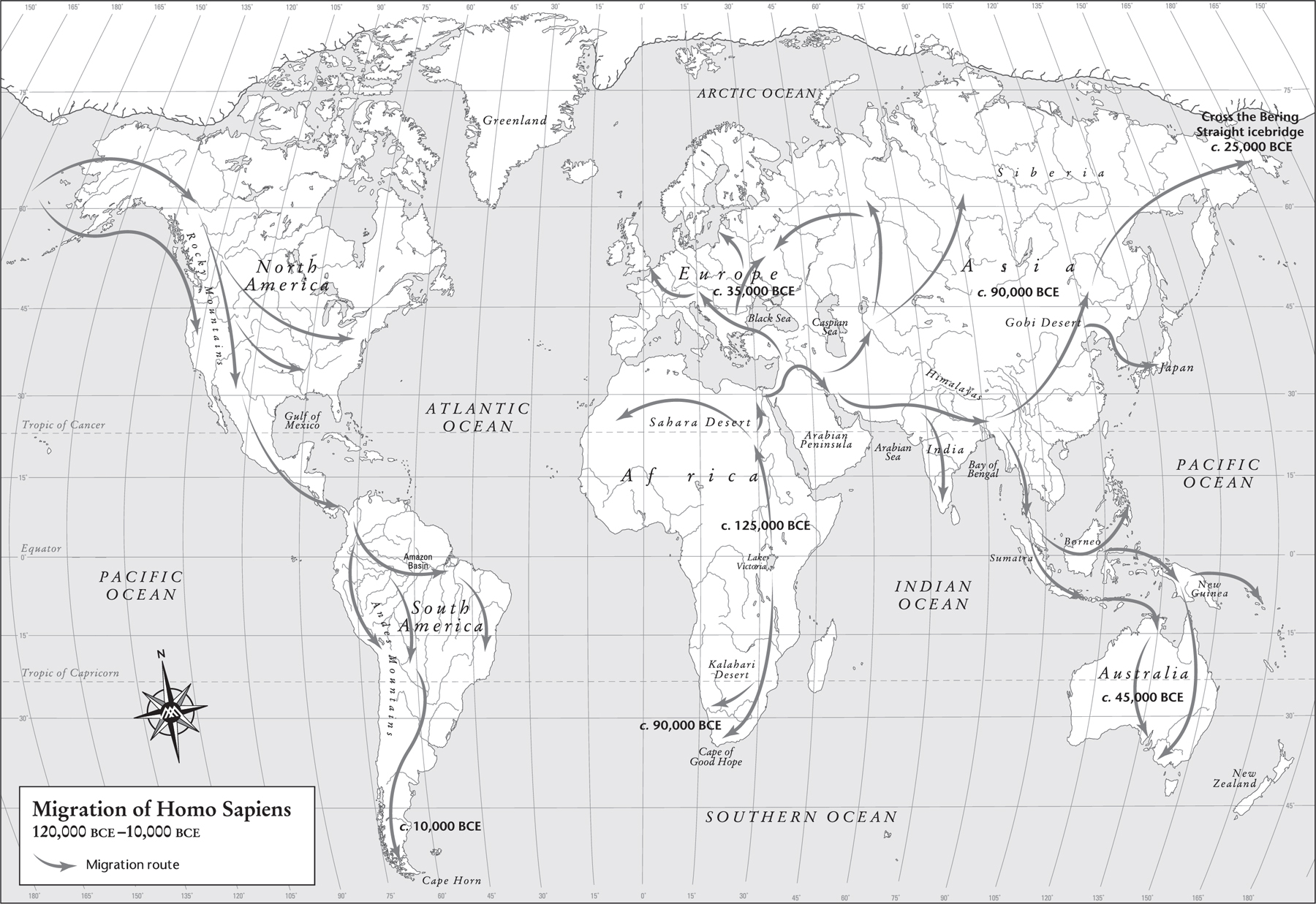
Map 2. Homo sapiens, modern humans, began leaving Africa 125,000 years ago. Further waves of migration followed 75,000 and 10,000 years ago.
After first understanding their immediate surroundings, our ancestors also understood the changing seasons and so developed a concept of time, the passing days and, perhaps more importantly, the predictable movements in the night sky. If, in our modern age, you can find a place not polluted by the lights of our civilisation, you might well be overwhelmed by the vastness of your field of vision. The ancients, by experience, will have worked out by the movements of the sun, moon and stars the connection between their position in the sky and the changing of the seasons. And yet, important as it was for the hunter-gatherers to be able to predict the migration of animals and the ripening of various fruits, the emergence of a settled farming lifestyle was perhaps even more critical.
In 1881, working west of Baghdad, then part of the Ottoman Empire, archaeologist Hormuzd Rassam discovered a fragment of a cuneiform clay tablet estimated to be some 4,500 years old. The tablet was uncovered in what was the ancient city of Sippar, now known as Tell Abu Habbah, in what is now Iraq. It was not until the end of the 19th century that the cuneiform script was translated and the significance of this particular tablet, among tens of thousands, was realised. It is the earliest map we have of the world – not just of a locality or neighbourhood, but of the known world. Looking down on a ‘plan’ view of the world, the map shows two concentric circles. The space between the circles is called marratu or ‘salt sea’, an ocean that encircles the world. Within the salt sea is the known world and running through the ‘world’ is a representation that is interpreted as the River Euphrates. The rectangle crossing the river is annotated as Babylon, while there are other symbols labelled as mountains, swamps and canals, and circles to represent important cities and focal points, such as Susa and Urartu.
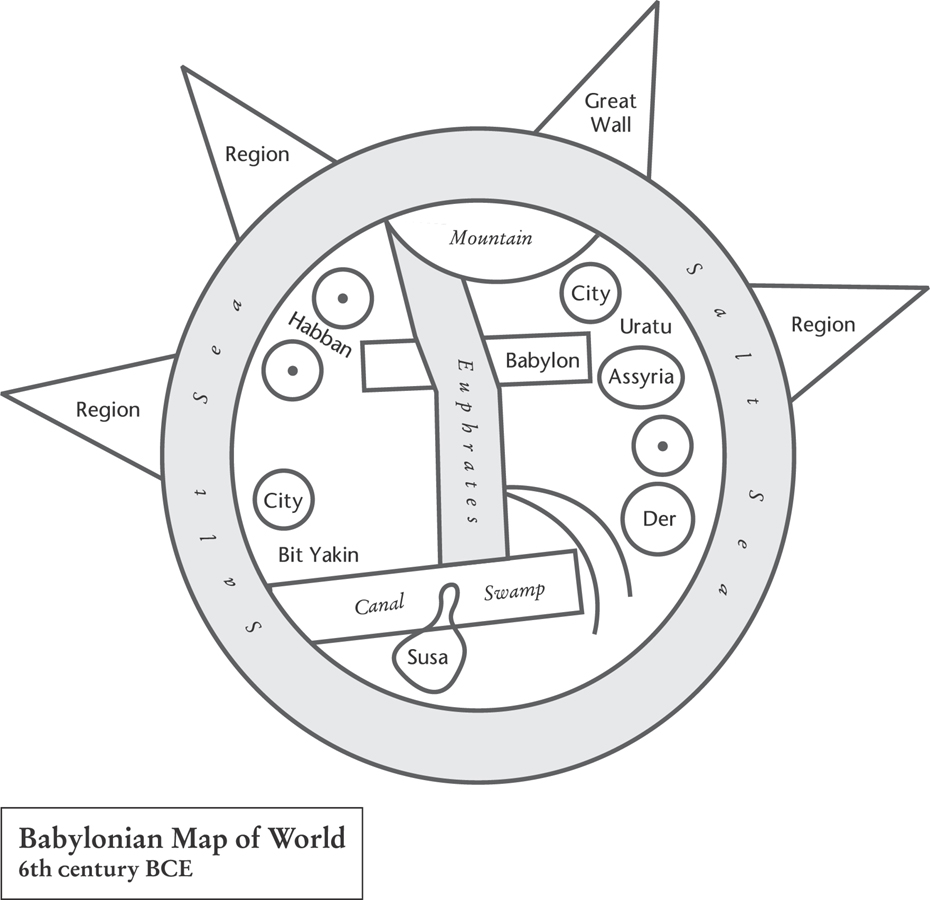
Map 3. This is the first known world map, created in the 6th century BCE. It attempts to show the known world as seen from Ancient Babylon.
The Babylonians produced many thousands of such tablets, usually depicting local land ownership – which would have been especially useful when organising land use and implementing taxation. Babylonian mathematicians, some 5,000 years ago, divided a circle into 360 equal segments, or degrees, after they had defined the year as approximately 360 days in length, and that calculation has remained in use into modern times. Those mathematical concepts held real value in the ability to make maps.
2
ANAXIMANDER’S VISION
In 1963, I was introduced to a new world and my vision of our planet took a major leap forward when I embarked on a trip to Greece. While in this historic landscape, with its ruins dating back across the ages, I began to dwell upon the world of the Ancient Greeks. Their concept of the world depended on understanding the natural world that was most familiar to them, one not so different from that known to the Babylonians, except it was a little further west and included a greater familiarity with the Mediterranean Sea and the lands around it.
In the 6th century BCE, in the thriving Ionian Greek city of Miletus, arose a school of pragmatic thinkers who, to some extent, freed themselves from the confines of belief in the Olympian gods; in the words of T. B. Parrington, a British classicist, ‘Technology drove mythology from the field.’ Reason ruled the day, at least in the cosmopolitan city of Miletus. A citizen of this city, Thales (624–546 BCE), possessed a great intellectual talent and, after making a considerable fortune in the olive oil business, retired and spent his time in the study of the cosmos, the Greek word for universe, meaning ‘order’. He studied the movements of the sun, moon and celestial bodies, and also the work of Babylonian and Egyptian researchers. Thales gained notoriety by predicting the solar eclipse of 585 BCE. His view was that by ignoring the mysticism of mythology and observing the natural order, it must be possible to discover the fundamental order of things. He concluded that all things must originate as water and developed the idea of a flat, disc-shaped earth floating on water, the primary substance – not unlike the Babylonian vision of 1,500 years earlier.
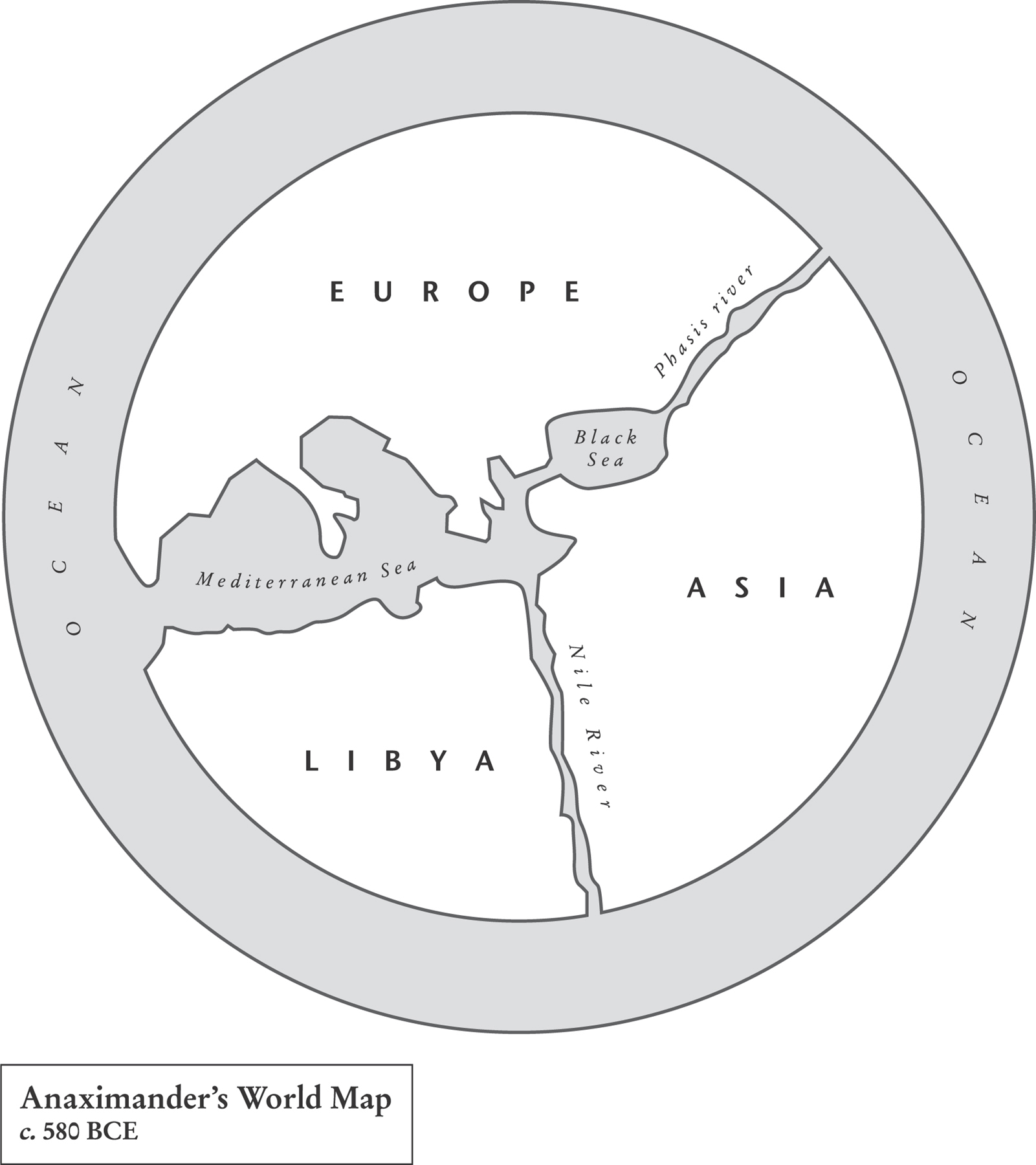
Map 4. The geographer Eratosthenes claimed that Anaximander published the first map of the world. Anaximander was undoubtedly influenced by earlier maps, including the Babylonian world map.
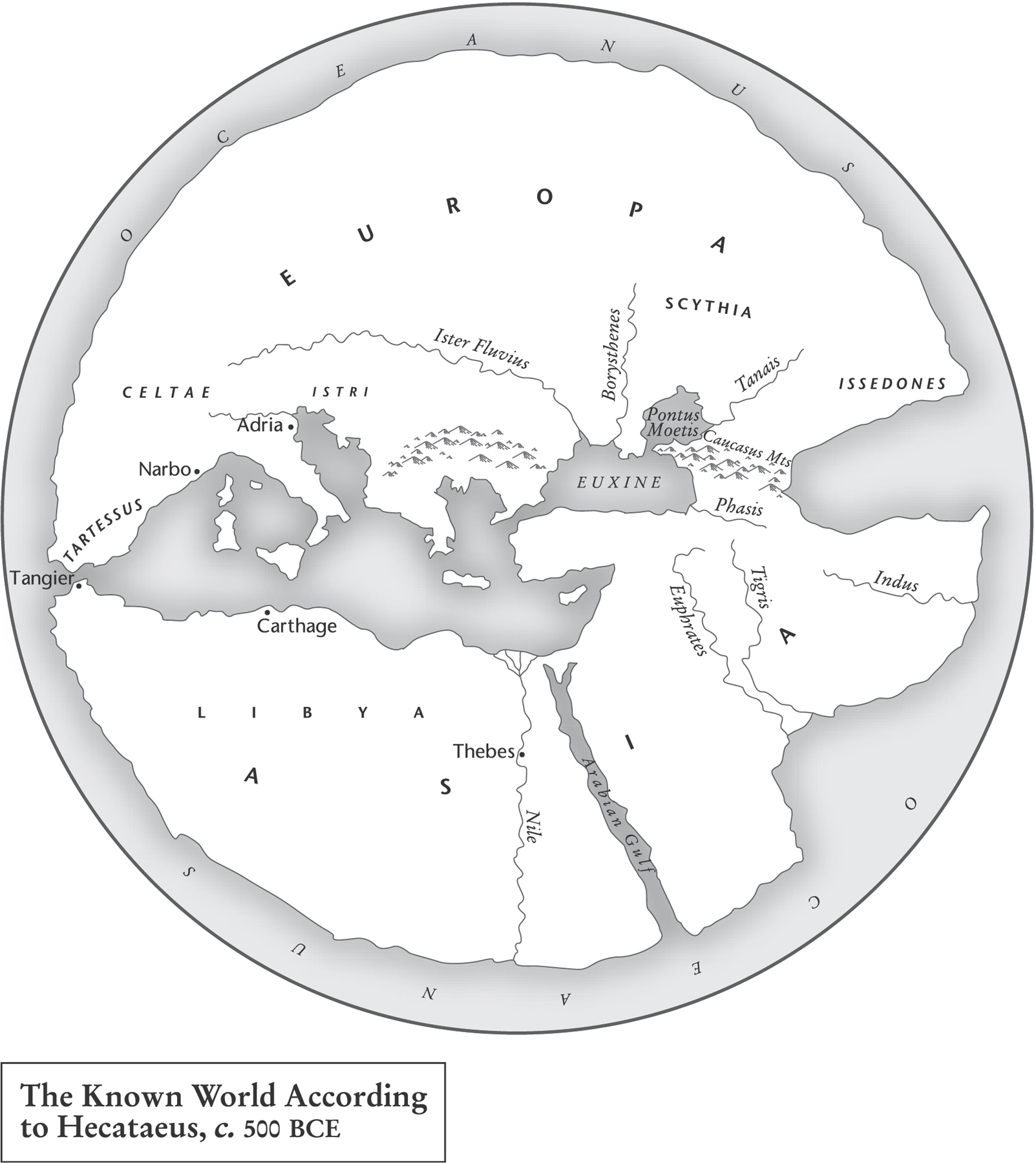
Map 5. Hecataeus is credited with improving upon the work of Anaximander. He created a more detailed interpretation of the world, approximately 80 years after Anaximander.
A fellow citizen, Anaximander (610–546 BCE), is assumed to have been a pupil of Thales, who was 14 years his senior. Thales – in whose mind observations of earlier societies and Greek philosophy had coalesced – certainly influenced Anaximander. In the theories attributed to him, the diversion from traditional myths and rational thought became obvious – he believed the world floated in the ‘infinite’ but was a cylinder in shape. Its inhabitable surface, on top of the cylinder, was surrounded by a circular ocean, reminiscent of the Babylonian concept. According to the geographer Eratosthenes, Anaximander was the first to publish a map of the known world, centred on, or at least near, his home city of Miletus. Hecataeus (550–476 BCE), also of Miletus, was inspired by Anaximander’s map to create his own version with added detail and produced a prose world history that separated out tradition and myth, relying on factual evidence wherever possible.
ERATOSTHENES AND THE WELL AT SYENE
Alexandria, founded on the northern coast of the Nile delta by Alexander the Great in 332 BCE, prospered after its foundation, far outliving the empire of Alexander, which fell apart after his death. Alexandria came under the rule of the Ptolemies, perhaps the most successful inheritors of his domains. They ruled with a relatively heavy hand, exacting high taxes to pay for a powerful army and navy, but they realised that knowledge was power and they had cultural ambitions. The manifestation of that power was the Great Library at Alexandria. The Ptolemies invested heavily in this fine institution; they even developed a policy that any ship arriving in Alexandria’s thriving port, guided into safe anchorage by the great ‘Pharos’ lighthouse, could be searched for scrolls and learned documents, which would be confiscated from their owners. These would then be carefully copied and the copies would be handed back to their owners, while the originals were placed in the library. Under the patronage of the Ptolemies, Alexandria attracted mathematicians, philosophers and scientists of all kinds. The lights of the Pharos guided valuable trade into Alexandria, but the reach of Alexandria’s influence ran well beyond the shores of the Mediterranean Sea – perhaps what modern politicians and diplomats now describe as ‘soft power’.
Eratosthenes (275–194 BCE), born in Cyrene and educated in other places including Athens, was a polymath and intellectual philosopher, geographer and mathematician who is reputed to have written a history of comedy, a chronology of major events in the Hellenistic world and also poetry. It was this gifted thinker that Ptolemy III, Euergetes, appointed head of Alexandria’s famous library in around 245 BCE. Eratosthenes, at the age of 31, now found himself the librarian in charge of the greatest concentration of knowledge in the known world and was able to sift through new scrolls and reports arriving in the Great Library. This position made Eratosthenes among the most respected scholars in the Greek world.
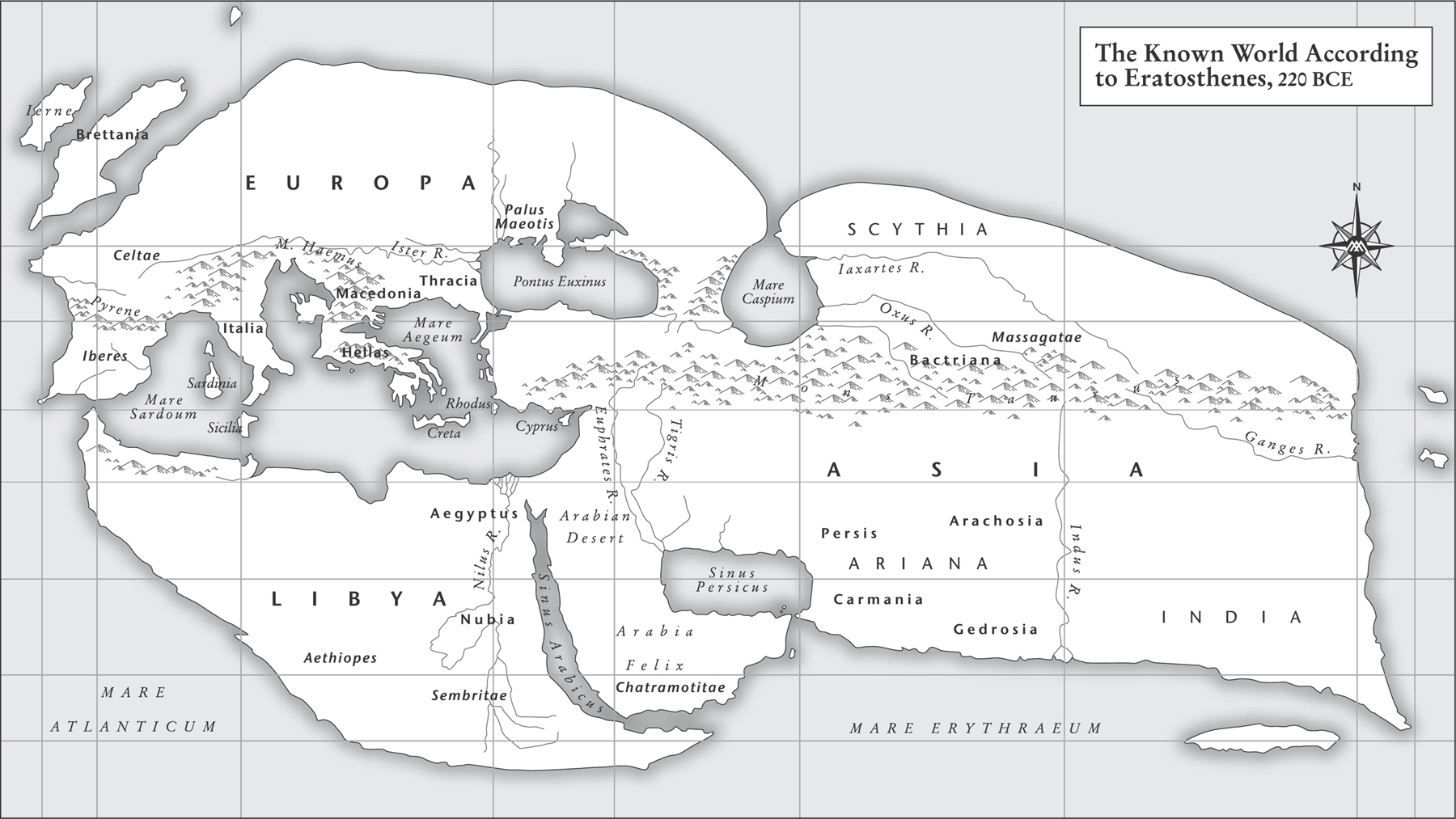
Map 6. Eratosthenes produced a new world map based on his mathematical studies for measuring the earth’s circumference. He also divided the world into climatic regions.
Among the scrolls was a report of the well of Syene on the Nile River. The report stated that at high noon the sun shone directly down this deep well, lighting its dark waters on the longest day of the year, 21 June. Eratosthenes assumed, based on observations by earlier and contemporary astronomers, that this must mark the northern edge of the tropics. The astronomers of the age believed that the sun, moon and stars rotated around a static earth; from this perspective, they also began to perceive that the sun moved around the earth each day and that, through its annual 365-day cycle, it was higher in the sky in summer than in other seasons of the year. This they called its ‘ecliptic’.
Aristarchus of Samos (310–230 BCE) had proposed a theory* that the sun was the centre of the known universe and that the earth revolved around it. He had even suspected that the stars were other suns but much further away. However, it is known that Eratosthenes rejected this idea, as Ptolemy did centuries later.
When the ecliptic was plotted, astronomers also noted that the sun was almost always at an angle to the equator, the imaginary line that divided the celestial sphere of the earth. The sun’s migrations were calculated to go from 24 degrees south to 24 degrees north of the equator, before returning on the same course; this was called the ‘obliquity of the ecliptic’. Now hang in there for a moment …
Though the Greeks spoke of land below the tropics, the consensus of opinion was that people could not live ‘down’ there. However, the development of the idea of the earth as a sphere divided by the equator into hemispheres, with lines of latitude marked by the tropics of Cancer and Capricorn, gave geographers their first three reference lines for the making of maps. The northern tropic was named Cancer, which is when the constellation of the Crab (Cancer) appears in the night sky. Likewise, the southern tropic was named Capricorn after the first appearance of the constellation of Capricorn, the horned goat.
Eratosthenes’ understanding of the cosmos meant that he could now set about measuring the earth. For his calculations, he considered that the sun’s rays would be parallel when they reach earth. Therefore, as the earth was a sphere, the sun’s light must hit different parts at different angles. Now he knew that the sun shone straight down the well at Syene and the town’s buildings cast no shadow when the sun was almost directly above. At the same moment in Alexandria, the buildings cast a shadow. Therefore, he concluded that if he could measure the angle of the shadow on that particular day at high noon, he might just be able to work out the size of the earth.
Eratosthenes understood that Syene was some 5,000 stades (800 kilometres) due south of Alexandria, and thus on the same meridian (a meridian is half of a circle, from pole to pole that crosses the equator at a right angle). If he could determine the distance between the two locations, this would give him the exact length of the arc of the meridian, the part between the two points, and therefore part of the circumference of the earth. This left him with one unknown in his calculation: if the arc between Syene and Alexandria represented 5,000 stades, what fraction of the full circle of the earth did that represent? Eratosthenes used a gnomon to work this out (a vertical pole used to measure time, set in a public place for everyone to use). When the gnomon’s shadow hit the meridian line, the sun was at its zenith. Eratosthenes carefully measured the shadow and the height of the gnomon, which gave him two sides of a triangle. He then drew the third side, and now he could work out the angle of the sun’s rays from the top of the gnomon to the edge of the shadow. This turned out to be 7 degrees 12 minutes, almost one-fiftieth of a complete circle, therefore 50 x 5,000 meant the earth was 250,000 stades in circumference, or about 46,000 kilometres. We now know, of course, that the earth is just over 40,000 kilometres around the equator.




